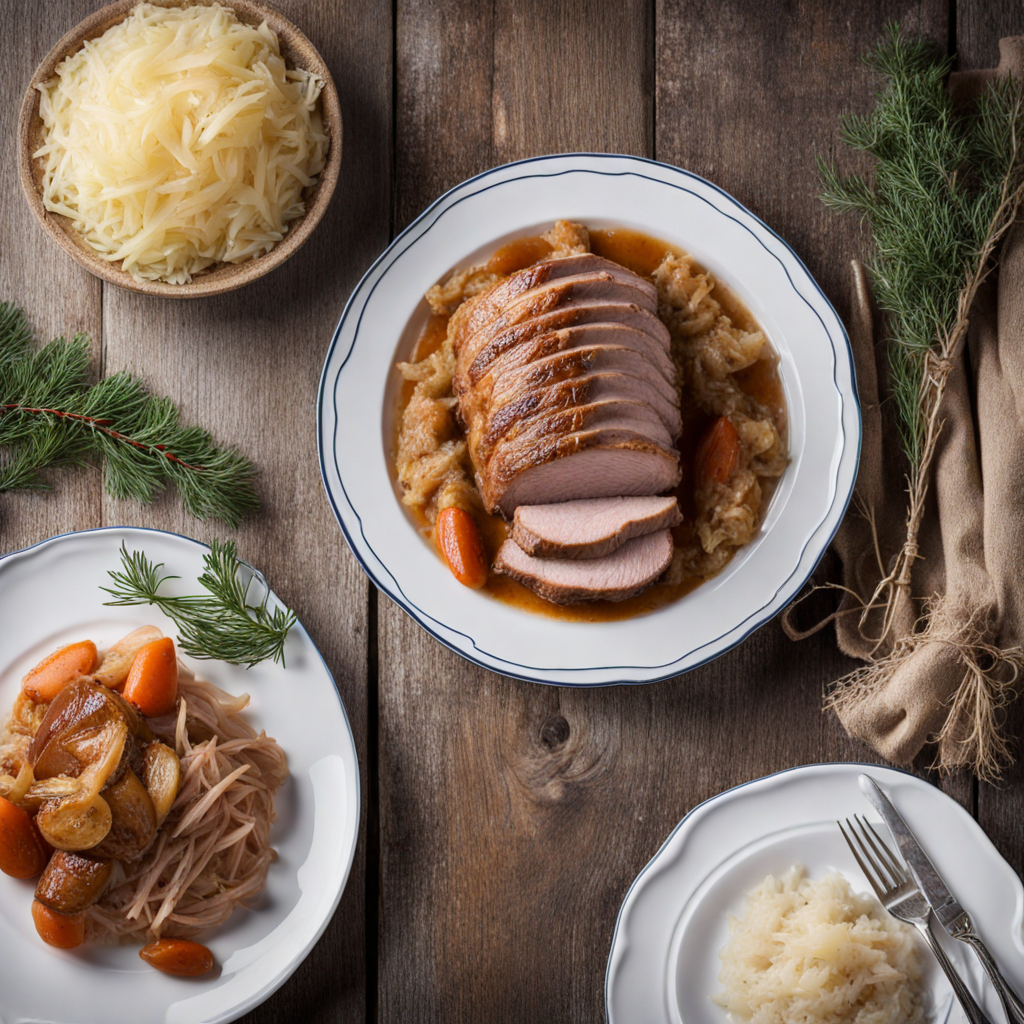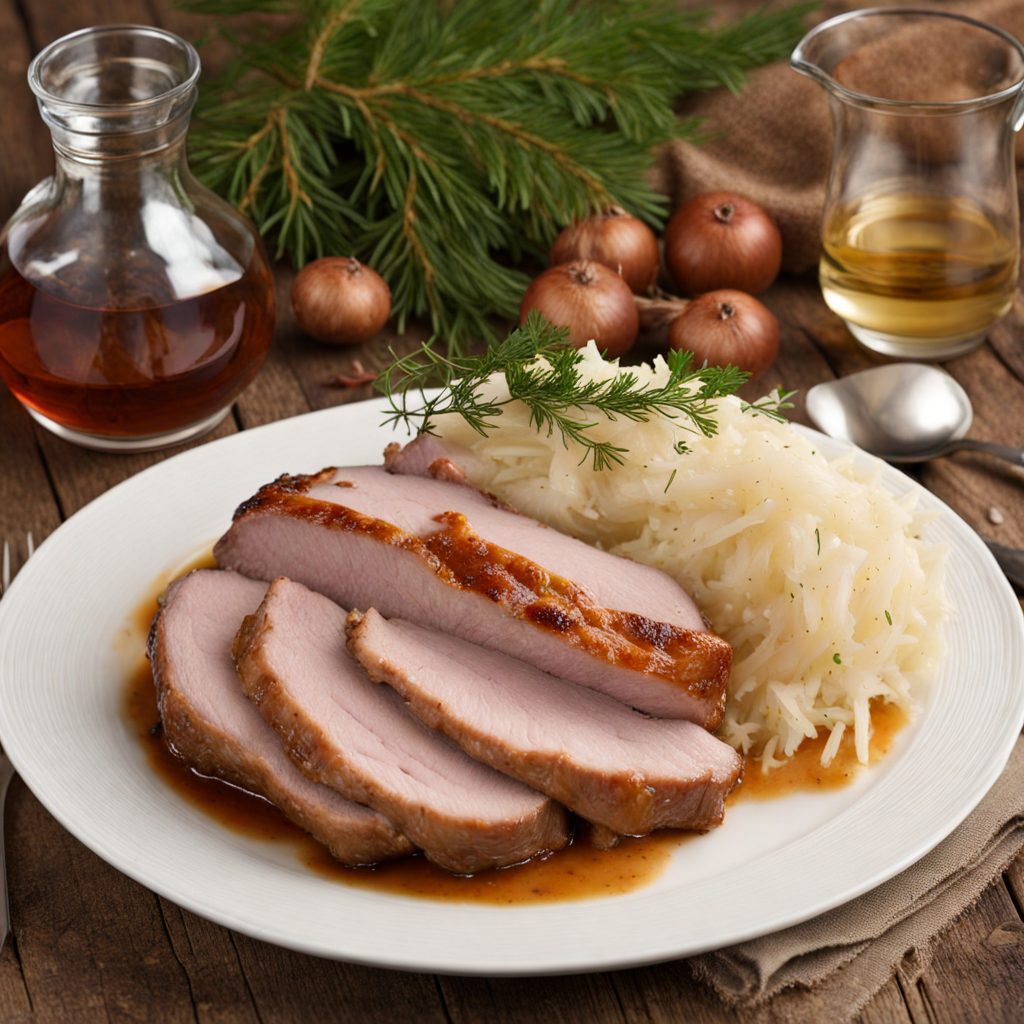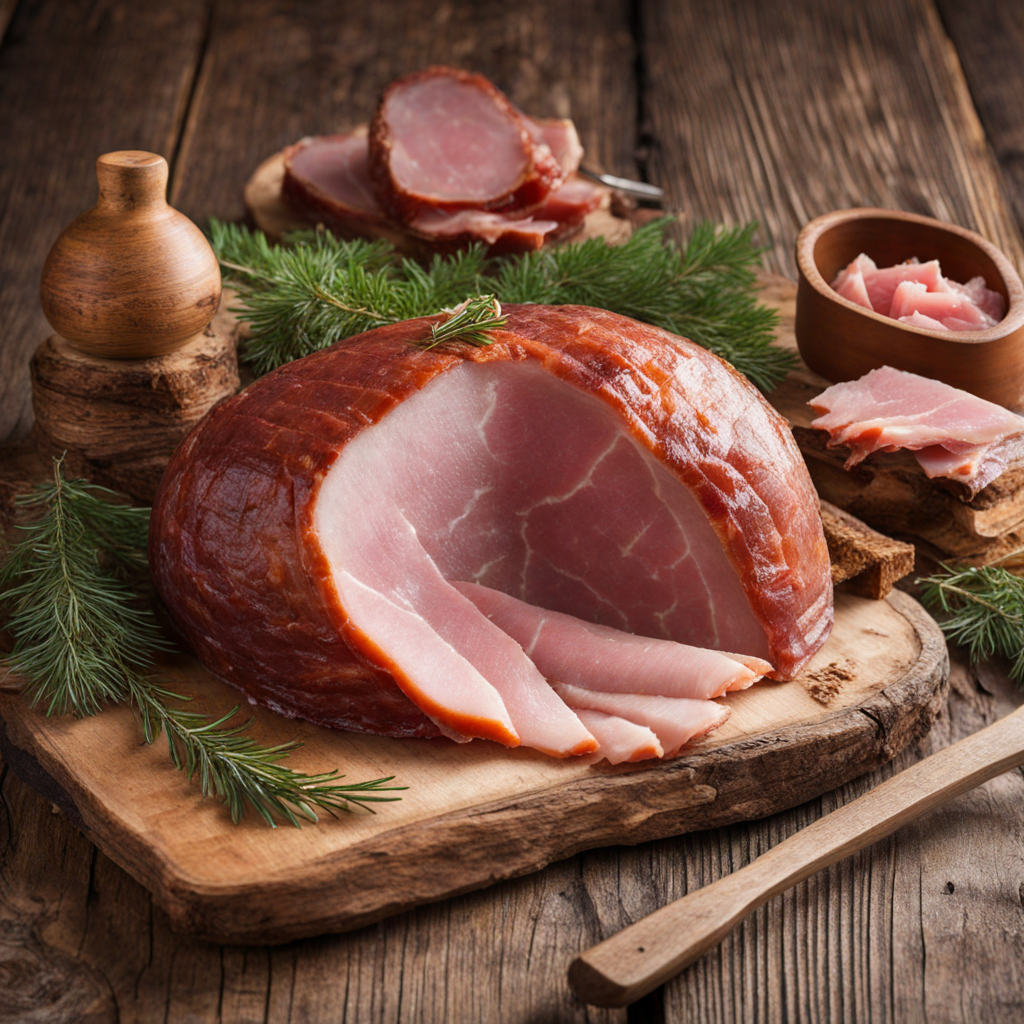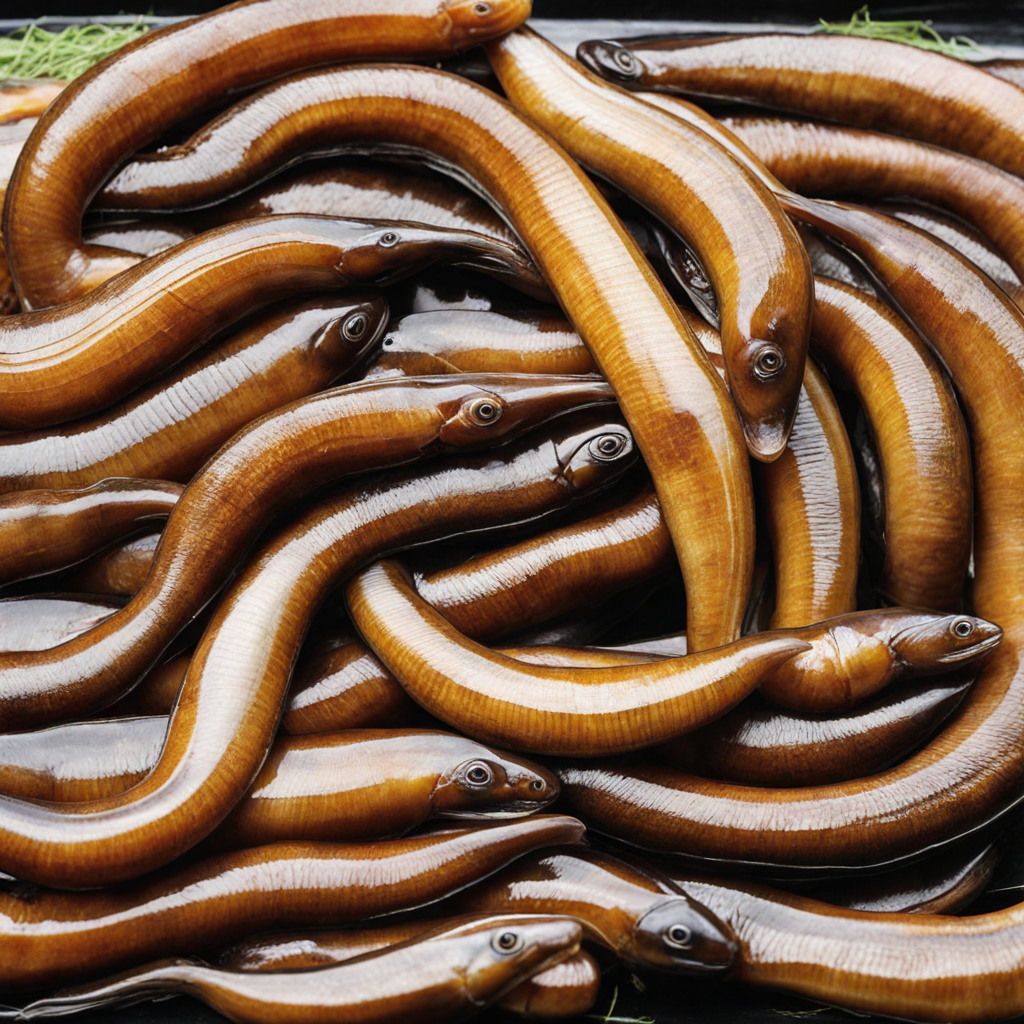Pork Roast with Sauerkraut
Pork Roast with Sauerkraut is a traditional Estonian dish that beautifully showcases the rustic flavors of the region. The pork, typically a well-marbled cut, is slowly roasted to achieve a tender, juicy texture, allowing the natural flavors to shine through. As it cooks, the fat renders down, creating a rich, savory base that complements the dish perfectly. Seasoned with simple yet aromatic spices, such as garlic and black pepper, the roast is often enhanced by the addition of fresh herbs, which add a touch of brightness to the hearty meat. The sauerkraut, a staple in Estonian cuisine, is equally important in this dish. Fermented cabbage offers a delightful tanginess that balances the richness of the pork. Traditionally, the sauerkraut is prepared with onions and sometimes flavored with juniper berries, which impart a unique, slightly piney aroma. The fermentation process not only enhances the flavor but also adds a distinct crunch and a range of health benefits, making it a perfect accompaniment to the succulent roast. When served, Pork Roast with Sauerkraut becomes a feast for both the eyes and the palate. The dish is often plated with a generous portion of the tender pork, glistening with its juices, alongside a mound of the vibrant sauerkraut. This combination of flavors and textures promises an unforgettable culinary experience. As you take a bite, expect the savory notes of the pork to meld seamlessly with the tangy, crisp sauerkraut, creating a harmonious blend that is both comforting and satisfying, representing the essence of Estonian home cooking.
How It Became This Dish
Seapraad hapukapsaga: A Culinary Journey Through Estonian Tradition The dish known as seapraad hapukapsaga, translating to "pork with sauerkraut," is an iconic representation of Estonian cuisine, deeply rooted in the country’s agricultural practices and cultural heritage. This dish intricately weaves together the threads of history, tradition, and seasonal rhythm, embodying the essence of Estonian identity. Origins of Seapraad Hapukapsaga The origins of seapraad hapukapsaga can be traced back to the agrarian societies of Northern Europe, where preservation techniques were essential for survival during harsh winters. In Estonia, a country with a long history of farming and fishing, the need to store food for the cold months led to the development of fermentation methods, particularly for vegetables. Sauerkraut, or hapukapsas, became a staple thanks to its ability to remain edible for extended periods while providing essential nutrients. Pork, on the other hand, has been a favored meat in Estonian kitchens for centuries. The Estonian landscape, dotted with farms, allowed for pig farming, which was often an integral part of household economies. The pig was not just a source of meat but also represented prosperity and abundance within households. As such, combining these two ingredients—pork and sauerkraut—created a dish that was not only practical but also festive, often reserved for special occasions and family gatherings. Cultural Significance Seapraad hapukapsaga holds a special place in the hearts and homes of Estonians. Traditionally, it is associated with winter celebrations, particularly during the Christmas season when families gather to feast and celebrate together. The dish symbolizes warmth, comfort, and togetherness, reflecting the communal spirit that is integral to Estonian culture. The preparation of seapraad hapukapsaga is often a communal affair, with family members coming together to cook and share stories, reinforcing bonds and passing down culinary traditions. It also illustrates the importance of seasonal eating in Estonia—using ingredients that have been preserved during the harvest ensures that the flavors of the land are celebrated throughout the year. Development Over Time Historically, the preparation of seapraad hapukapsaga was quite simple, relying on basic cooking methods and locally available ingredients. The pork would be seasoned, perhaps with some bay leaves and other herbs, and then slow-cooked to achieve tenderness. The sauerkraut, fermented cabbage, would be added to the pork, creating a harmonious blend of flavors—the rich and savory pork perfectly balanced by the tanginess of the cabbage. As Estonia underwent various political and social changes, particularly during the 20th century, the dish evolved in response to new influences while maintaining its core identity. The Soviet occupation, for instance, brought about changes in food availability and societal structures, impacting how Estonians approached traditional dishes. Despite these challenges, seapraad hapukapsaga remained a staple due to its accessibility and the nostalgia it evoked. The post-independence era in the 1990s saw a resurgence in interest in traditional Estonian cuisine, including seapraad hapukapsaga. Chefs began to explore and reinterpret this classic dish, often adding modern twists while respecting its roots. The rise of farm-to-table movements and an emphasis on local sourcing further revitalized interest in traditional ingredients and methods. Modern Interpretations Today, seapraad hapukapsaga is not just a dish of the past but a living tradition that adapts to contemporary tastes. Modern Estonian chefs often experiment with various types of pork, incorporating different cuts and preparation methods. Some may opt for smoked pork, imparting a rich flavor that enhances the dish’s character, while others may explore vegetarian or vegan alternatives, using plant-based proteins to recreate the traditional flavors. Gastronomic festivals and local markets have also embraced seapraad hapukapsaga, allowing chefs to showcase their interpretations in a vibrant setting. This has led to a renewed appreciation for the dish both within Estonia and among international visitors keen to explore Estonian flavors. Conclusion Seapraad hapukapsaga is more than just a dish; it is a testament to the resilience of Estonian culture and the adaptability of its culinary traditions. From its humble origins rooted in necessity to its status as a celebrated part of the Estonian culinary landscape, this dish encapsulates the spirit of a nation that values its heritage while embracing modernity. As Estonians continue to gather around tables to share this beloved dish, they not only nourish their bodies but also honor their ancestors, celebrate their culture, and embrace the warmth of community. Whether enjoyed during festive occasions or a simple family meal, seapraad hapukapsaga remains a cherished symbol of Estonian identity, bringing together generations through the universal language of food.
You may like
Discover local flavors from Estonia







